Yunzhi Hao
Spatiotemporal-Augmented Graph Neural Networks for Human Mobility Simulation
Jun 19, 2023



Abstract:Human mobility patterns have shown significant applications in policy-decision scenarios and economic behavior researches. The human mobility simulation task aims to generate human mobility trajectories given a small set of trajectory data, which have aroused much concern due to the scarcity and sparsity of human mobility data. Existing methods mostly rely on the static relationships of locations, while largely neglect the dynamic spatiotemporal effects of locations. On the one hand, spatiotemporal correspondences of visit distributions reveal the spatial proximity and the functionality similarity of locations. On the other hand, the varying durations in different locations hinder the iterative generation process of the mobility trajectory. Therefore, we propose a novel framework to model the dynamic spatiotemporal effects of locations, namely SpatioTemporal-Augmented gRaph neural networks (STAR). The STAR framework designs various spatiotemporal graphs to capture the spatiotemporal correspondences and builds a novel dwell branch to simulate the varying durations in locations, which is finally optimized in an adversarial manner. The comprehensive experiments over four real datasets for the human mobility simulation have verified the superiority of STAR to state-of-the-art methods. Our code will be made publicly available.
Transition Propagation Graph Neural Networks for Temporal Networks
Apr 15, 2023
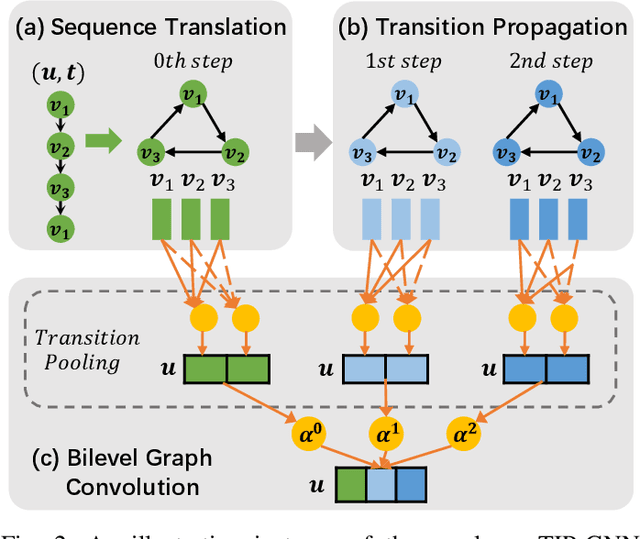

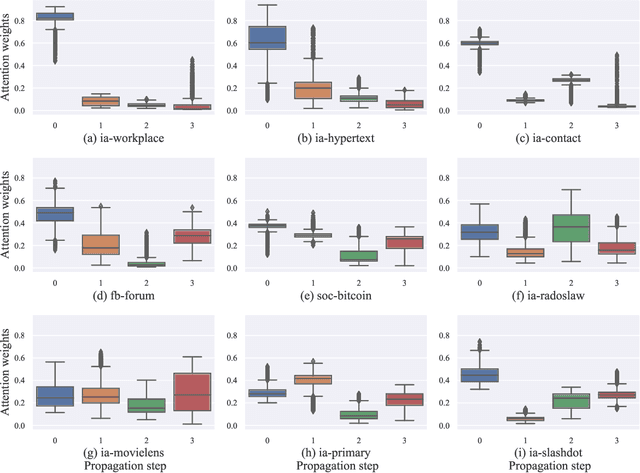
Abstract:Researchers of temporal networks (e.g., social networks and transaction networks) have been interested in mining dynamic patterns of nodes from their diverse interactions. Inspired by recently powerful graph mining methods like skip-gram models and Graph Neural Networks (GNNs), existing approaches focus on generating temporal node embeddings sequentially with nodes' sequential interactions. However, the sequential modeling of previous approaches cannot handle the transition structure between nodes' neighbors with limited memorization capacity. Detailedly, an effective method for the transition structures is required to both model nodes' personalized patterns adaptively and capture node dynamics accordingly. In this paper, we propose a method, namely Transition Propagation Graph Neural Networks (TIP-GNN), to tackle the challenges of encoding nodes' transition structures. The proposed TIP-GNN focuses on the bilevel graph structure in temporal networks: besides the explicit interaction graph, a node's sequential interactions can also be constructed as a transition graph. Based on the bilevel graph, TIP-GNN further encodes transition structures by multi-step transition propagation and distills information from neighborhoods by a bilevel graph convolution. Experimental results over various temporal networks reveal the efficiency of our TIP-GNN, with at most 7.2\% improvements of accuracy on temporal link prediction. Extensive ablation studies further verify the effectiveness and limitations of the transition propagation module. Our code is available at \url{https://github.com/doujiang-zheng/TIP-GNN}.
Temporal Aggregation and Propagation Graph Neural Networks for Dynamic Representation
Apr 15, 2023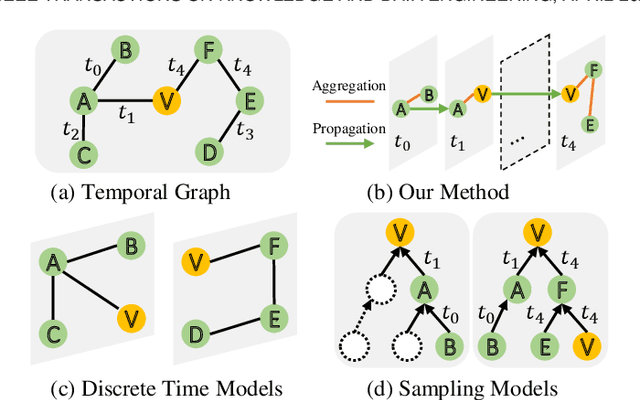
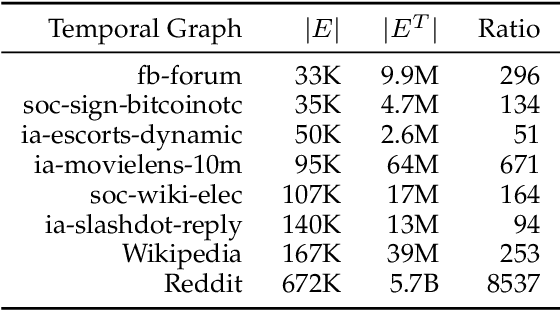
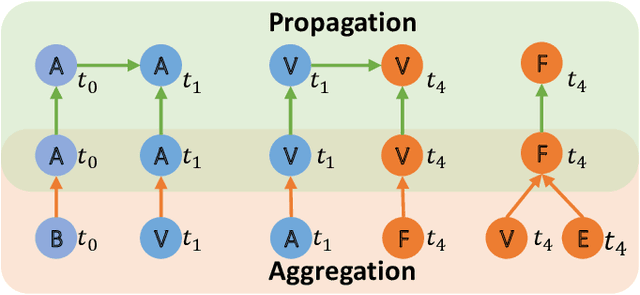

Abstract:Temporal graphs exhibit dynamic interactions between nodes over continuous time, whose topologies evolve with time elapsing. The whole temporal neighborhood of nodes reveals the varying preferences of nodes. However, previous works usually generate dynamic representation with limited neighbors for simplicity, which results in both inferior performance and high latency of online inference. Therefore, in this paper, we propose a novel method of temporal graph convolution with the whole neighborhood, namely Temporal Aggregation and Propagation Graph Neural Networks (TAP-GNN). Specifically, we firstly analyze the computational complexity of the dynamic representation problem by unfolding the temporal graph in a message-passing paradigm. The expensive complexity motivates us to design the AP (aggregation and propagation) block, which significantly reduces the repeated computation of historical neighbors. The final TAP-GNN supports online inference in the graph stream scenario, which incorporates the temporal information into node embeddings with a temporal activation function and a projection layer besides several AP blocks. Experimental results on various real-life temporal networks show that our proposed TAP-GNN outperforms existing temporal graph methods by a large margin in terms of both predictive performance and online inference latency. Our code is available at \url{https://github.com/doujiang-zheng/TAP-GNN}.
 Add to Chrome
Add to Chrome Add to Firefox
Add to Firefox Add to Edge
Add to Edge